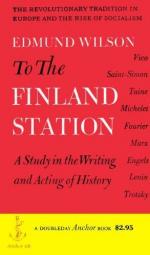
|
| Name: _________________________ | Period: ___________________ |
This test consists of 5 multiple choice questions, 5 short answer questions, and 10 short essay questions.
Multiple Choice Questions
1. Where did Lenin meet his future wife?
(a) In London.
(b) In Zurich.
(c) In Berlin.
(d) In Siberia.
2. When did Marx finish the first volume of Das Kapital?
(a) 1867.
(b) 1848.
(c) 1854.
(d) 1872.
3. How do Marx and Engels describe the proletariat?
(a) As an eternal principle of society.
(b) As the anti-thesis.
(c) As the emergent institution.
(d) As the next usurpers.
4. When did Trotsky first study Marx and Lenin?
(a) In France.
(b) In Siberia.
(c) At the university.
(d) In high school.
5. The "Communist Manifesto" by Marx and Engel wanted to end ____________.
(a) State run transportation.
(b) Free education for children and workers.
(c) The right of inheritance.
(d) Appropriation of land.
Short Answer Questions
1. How did Trotsky try to influence the relationship between the Mensheviks and the Bolsheviks?
2. Where did Trotsky go after he escaped from Russia?
3. Where does stability come from in dialectic materialism?
4. In what mental/emotional state did Lenin find the Russian intellectuals at the turn of the century?
5. What philosopher did Engels become interested in when he was in Berlin?
Short Essay Questions
1. How did Marx ultimately find Engels?
2. What critique did Engels make of classical economics?
3. What are the ten points addressed in the Communist Manifesto?
4. Where did Marx and Engels apply their theories?
5. Why, according to Trotsky, did the 1905 Soviet fail?
6. What was Marx' engagement with the Workers' Associations by the time Das Kapital was finished?
7. How was Engels brought to socialism?
8. How does dialectical materialism correlate to economic phenomena?
9. How did Marx and Engels describe the stages of economic development?
10. What was Marx' standard for saying that the proletariat and bourgeoisie moralities are opposed to each other?
|
This section contains 668 words (approx. 3 pages at 300 words per page) |

|




